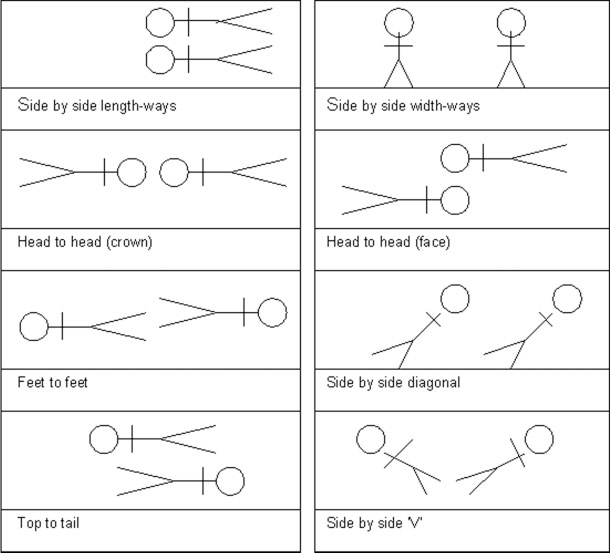How Twins Co-Bed
How Twins Co-Bed
Configurations
If parents decide to sleep their babies together, another dilemma arises – which sleeping positions are safe and comfortable?
Studies carried out by Ball (2006) showed that in the first month most co-bedded infants slept side-by-side. By the third month there was more variability, and those still co-bedded were positioned side-by-side, head-to-head and feet-to-feet. No evidence was found that any of these arrangements is more or less safe, comfortable, or connected with sleep duration.

General safety tips
While there is no strong evidence supporting co-bedding over separate bedding, or vice versa, general safe sleep advice applies to twins as well as singletons:
- Room-share until 6 months of age: Sleeping babies alone in a room before the age of 6 months increases the risk of SIDS. There are a number of ways in which families with twins can arrange to room-share with both babies: both parents and both co-bedded babies in one room, both parents and babies sleeping in separate beds in one room, one parent and both babies in one room or one parent with baby in one room and other parent with other baby in another room.
- Makeshift barriers separating co-bedded babies are unnecessary and can present a risk of accidental injury or suffocation.
- Positioning twins diagonally across the cot may be dangerous as there is no safe way of securing a blanket around one or both babies. If using sleeping bags make sure babies’ heads are far apart to ensure they don’t get covered by one another’s sleep bag.
- Both co-bedded and separate sleeping twins should be put down to sleep on their backs, as this reduces the risk of SIDS compared to side or tummy sleeping.
